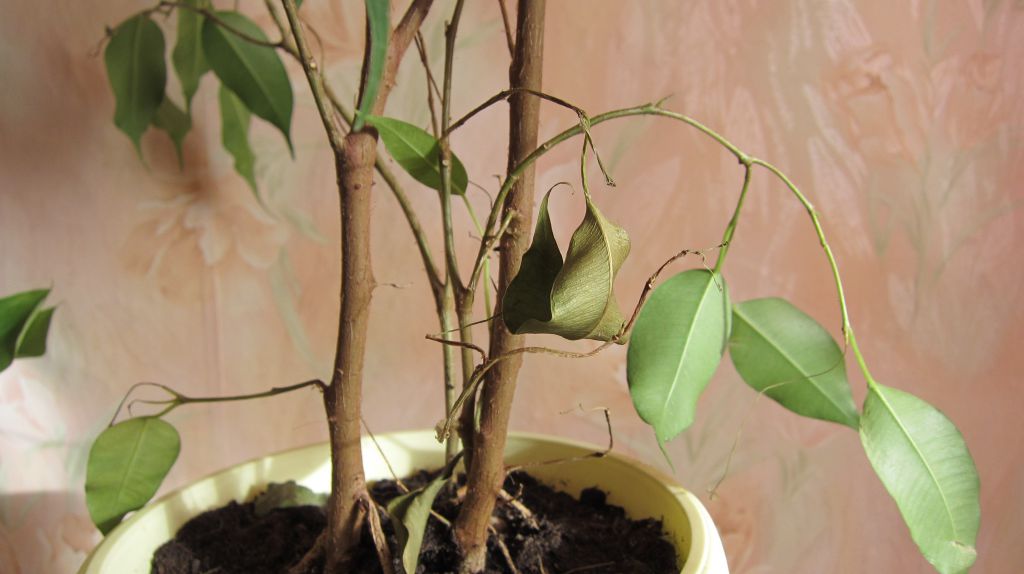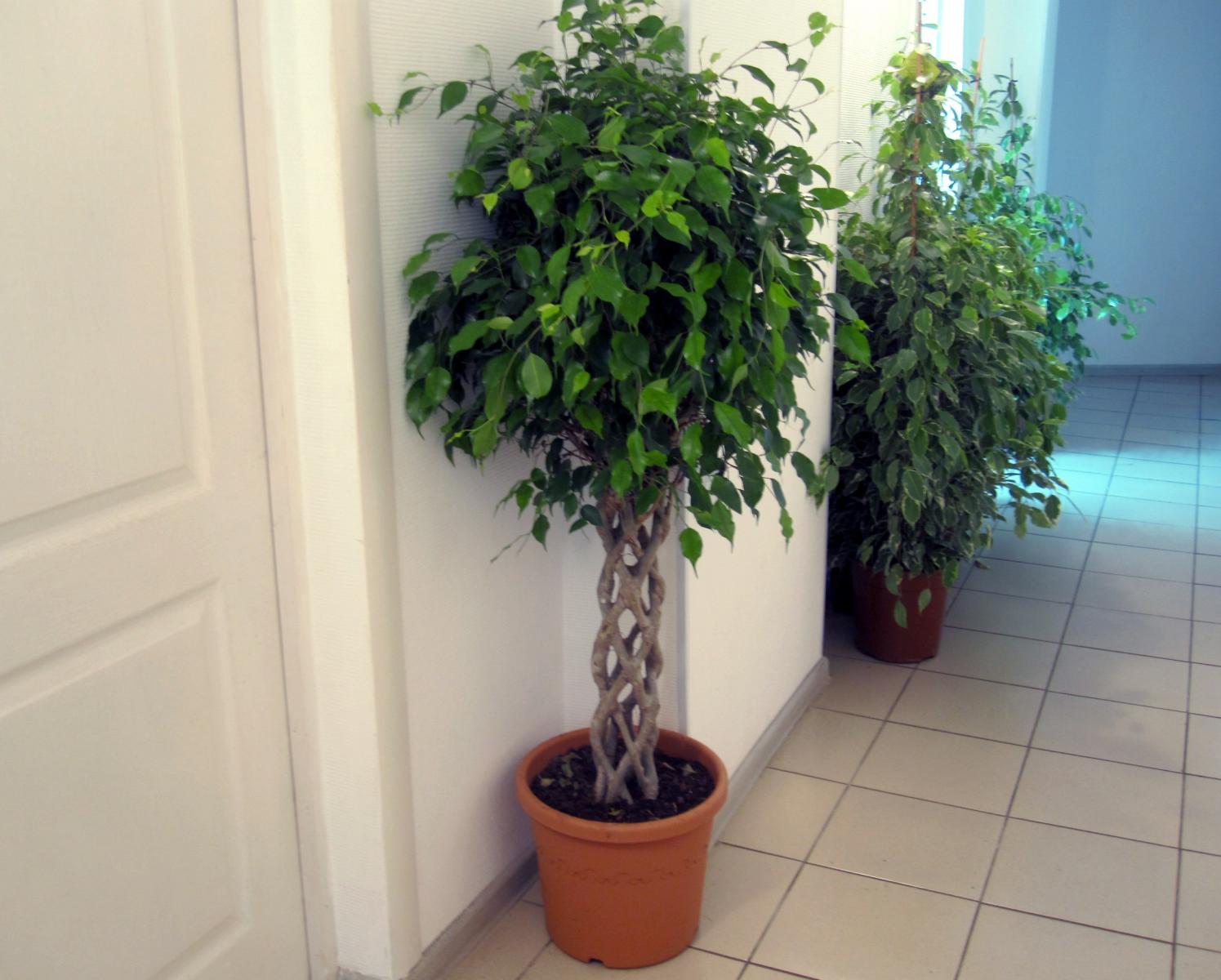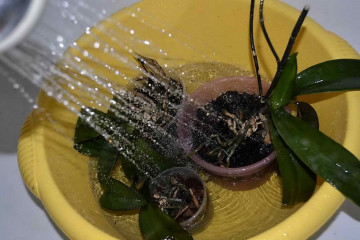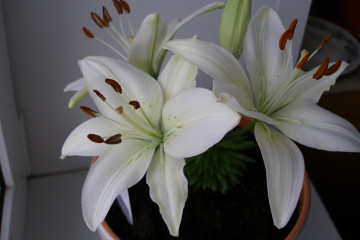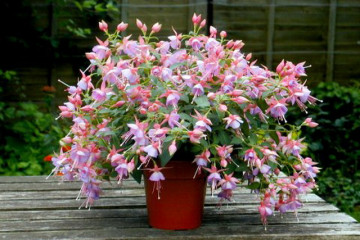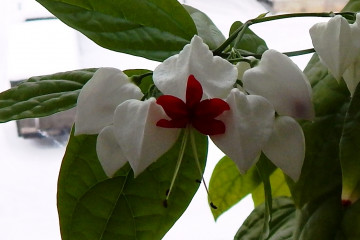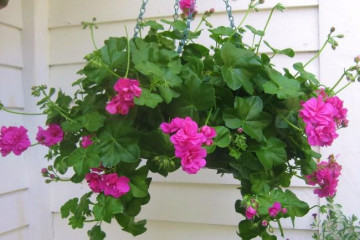How to care for Benjamin's ficus in a pot at home
Content:
Ficus Benjamin stands alone in the world of domestic plants. This graceful culture cleans the air very well, creates a favorable and cozy environment in the apartment. The inhabitants of Thailand have raised the evergreen shrub to the rank of sacred plants.
This perennial is not capricious and is easy to grow in an apartment.
The main thing is to know how to care for Benjamin's ficus in a pot at home. You can learn this from experienced florists who share their secrets and experience in growing and caring for a tree.
Care features
Ficus Benjamin represents the genus Ficus. In nature, he is a resident of Asian countries and Australia. The tree-like shrub was liked not only by flower growers, but also by landscape designers. The plant is suitable for growing both experienced flower lovers and beginners. Caring for him is simple. However, in order for the ficus to grow healthy, you must adhere to simple rules. Among which:
- correct watering;
- timely feeding;
- competent preparation for the winter period.
Watering
The tree should be watered no more than once every 4-6 days. If the soil in the pot has not dried out in a week, then you can wait with watering. It is impossible to fill in the perennial. In the cold season, exotics are watered no more than 1 time in 10-14 days.
Top dressing
The exotic has a dormant period. It falls in autumn and winter. Spring is the time of awakening. Fertilization should be considered in April. It is allowed to feed the tree-like shrub with purchased mineral mixtures, the packaging of which is marked "for ficus".
The feeding scheme is as follows:
- in April, May - once a month;
- in June, July - once every 20-25 days;
- in August, September, October - every 14 days.
Preparing for the winter period
Late autumn and winter for a slender culture is a time of rest. The owner must competently prepare the pet for this period. If during the warm period the tree is not allowed to stand on the sunny side under direct rays, then in the cool season the ficus needs a long daylight hours. It is placed on the south window or next to it. It is even recommended to install additional lighting.
The temperature during the rest period should not fall below + 15 ... + 17 degrees. The optimum temperature is + 19 ... + 21 degrees. Another important thing to keep in mind is reducing the frequency of watering.
Pruning procedure
Pruning as a sanitary and anti-aging measure is carried out before the plant departs from the dormant period, that is, in March - the very first days of April.
The procedure will require:
- sharp knife or secateurs;
- fly ash;
- gloves;
- alcohol;
- napkin.
Do not trim with blunt scissors. This will damage the plant. The cut should be straight. All work is carried out promptly. The instrument is treated with alcohol for disinfection.
Ficus Benjamin is trimmed in such a way as to maintain the symmetry of the bush. The apical shoots are removed no more than 8-11 cm. The slices secrete juice. It is cleaned with a napkin. The wounds are covered with ash.
A quick way to get a lush tree is to correctly shape the crown. Thick branches are cut at an angle. The incisions are made near the kidney. Thin and young shoots are removed by a third. They are removed 3 cm above the kidney. At the trunk, part of the kidneys are pinched. The twigs that twist inside the tree must be cut off.
Reproduction of exotic
How does Benjamin's ficus reproduce at home? In general, a plant can be propagated in several ways:
- sowing seeds;
- removal of layering;
- cloning a leaf;
- planting cuttings.
The best propagation method is considered to be cuttings. The rest are ineffective in an apartment. Breeding with cuttings involves three important steps:
- reproduction itself by cuttings;
- rooting of the cutting;
- selection of suitable containers.
Cuttings
The stem cutting is taken from a healthy adult specimen. Usually the stems are harvested in late spring, summer. At this time, the bush is the fluffiest and is in its prime. Autumn and winter are not suitable for the procedure.
Step by step technology:
- Propagation by cuttings begins by cutting off a small stem. Enough 10-16 cm in length. There should be 6-8 leaves on the branch.
- Cuttings are taken from the top of one of the shoots.
- A sanitized sharp knife is used. Cut at a slight angle.
- The released juice is removed with a napkin. The wound is treated with ash.
- Half of the leaf blades on the stem cuttings are removed.
- The base of the branch is cut into 2-3 parts. Toothpicks and matches are placed between them.
- The twig is placed in a glass of water. Activated carbon is dissolved in water.
- A glass with a twig is placed on the window. Water is periodically added.
To root the scion, you need a suitable substrate. You can buy it at a specialty store or make your own. Planting takes place in the soil, consisting of peat, sand, humus.
A drain is placed at the bottom of the pot. The container is filled with a substrate. A small depression is made into which the cutting is transplanted. The soil is watered. For better rooting, the new plant is covered with a film.
For a young bush, you should take a medium-sized, stable pot. It is better if it is made from natural materials. Do not plant the cutting in a large pot. This can cause increased root growth. Because of this, the development of culture will fail. The pot should be small for the harmonious development of all parts of the plant.
Recommendations for transplanting exquisite exotic
Experienced growers warn that Benjamin's ficus has a delicate root system. It develops both horizontally and vertically. Therefore, transplanting a flower is a careful process.
Step-by-step instruction:
- A new pot is being picked up. It must have drainage holes.
- 24 hours before transplanting, the ficus in an old pot is watered abundantly. This is to make it easier to get the plant out of the tub.
- Before transplanting the exotic, drainage is poured into a new pot, then a layer of sand and nutrient soil.
- The ficus is removed from the old container with an earthen lump. Partially the earth is shaken off.
- The root system is placed in a new pot and covered with substrate.
- Exot will grow better if the plant is watered immediately after planting.
The right substrate for Benjamin Ficus is a fertile substrate. You can buy a ready-made mixture enriched with various trace elements in the store. It is allowed to prepare the soil at home. To do this, mix in equal amounts:
- leafy land;
- high-moor peat;
- humus;
- a mixture of needles;
- garden land;
- turf.
In order to plant a young plant bought in a store, the substrate is prepared according to a different recipe. Peat, river sand and coniferous soil are mixed. The sand should be less than the rest of the ingredients.
Leaf shedding problem
Why does ficus shed its leaves? There may be several reasons for this. Among others:
- Improper lighting. The foliage of Benjamin's ficus cannot live without light, but it will be difficult for her even under the scorching rays of the sun.
- Frequent or too infrequent watering. You need to water the plant every 4-6 days.
- Landing site. A young plant must be transplanted from a purchased pot.
- Drafts and lower temperatures. In this case, the ficus sheds its leaves, and also withers and may even die.
- Lack of free space. Too close proximity to other specimens harms exotic. Dense plantings should be planted. It is allowed to leave 2-4 trees in the pot.
- Starvation. We are talking about a lack of fertilizer.
Diseases and pests
Among other things, the answers to the question "why do the leaves of the ficus turn yellow and fall?" are the presence of diseases and the invasion of pests. Common diseases:
- root rot;
- powdery mildew.
It is recommended to fight ailments with the help of fungicides.
Due to mistakes in care (waterlogging of the soil, lack of nutrition, lighting), parasites can attack the tree. The most frequent guests on ficus:
- ticks;
- aphid;
- shield.
To destroy the army of insects, the leaves are treated with soapy water. It is allowed to use the drugs Aktellik, Aktofit, Admiral, etc.
Weaving trunks
Ficus Benjamin has a peculiarity: its trunk can be braided together, creating whimsical compositions. This should be done from healthy, old specimens, the height of which is at least 15-20 cm, the thickness of the trunk is more than 1 cm. Among the common types of weaving are the following:
- spiral;
- hedge;
- lattice;
- braid.
The last type is considered the simplest. To braid the ficus with a pigtail is within the power of each grower.
Tips for braiding at home:
- You need to pick up three plants of the same height.
- Transplant them into one pot.
- Cut off excess lateral leaves, exposing the trunks by 15-30 cm. You can trim before transplanting in one container or after the procedure.
- Before weaving begins, the soil is shed. This will allow the shoots to become more pliable.
- Next, the weaving process begins. It is noteworthy that the pattern can be formed with or without a gap.
Taking care of Benjamin's ficus at home is not difficult. Among the main activities are periodic watering, sub-crusting, winter preparation, pruning and annual replanting. If you follow all the recommendations from experienced florists, then the interior will be decorated with a sophisticated beautiful evergreen flower, the trunks of which can be braided in different variations during formation.





